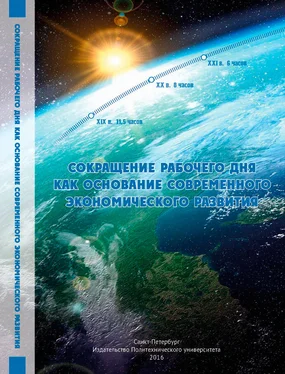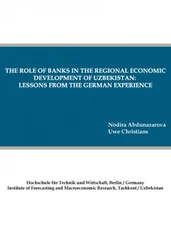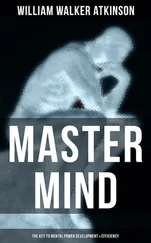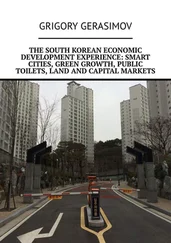At the same time, transition from slave-owing to feudalism is undoubtedly connected to enlargement of possibilities for development of peasantry as a class of immediate producers of material benefits. The position of serfs is more preferable than the position of slaves not only in respect of the personal consumption level but in consequence of less working time, availability of free time, a possibility to utilize a part of produced products and so on.
Establishment of large-scale machine industry domination makes it objectively possible to combine social welfare growth with ensuring full well-being and free all-round development for all members of the society. Already at the turn of 1870s-1880s it was well-grounded marked: “The possibility of securing for every member of society, by means of socialised production, an existence not only fully sufficient materially, and becoming day by day more full, but an existence guaranteeing to all the free development and exercise of their physical and mental faculties – this possibility is now for the first time here, but it is here ” [7]. Respectively, the progressive tendency of modern economic development consists in approaching to social economic equality of all members of the society, concerning conditions of their development.
For deeper understanding of modern economic development it is advantageous to view components of social welfare more specifically.
The Rate of Free Time as the Index of Social Welfare
As social welfare supposes ensuring members of the society with consumer goods, so the dynamics of the consumption level per capita can be an index of the potential of economic development.
At the same time, as it was shown before, social welfare is not exhausted with personal consumption. The relation between time that the society spends on labour and time of nonproductive social activities is essential for its assessment.
The idea about labour, as an activity with a useful result, is widely spread. Of course, labour has a useful result but not any activity with a useful result is labour. For example, taking meals is useful but it is not a basis to consider eating identical to labour. Walking before going to sleep, still remaining an element of a rest, including a rest from labour, is useful and so on. That is why to understand labour it is necessary to imagine its result more definitely to characterize the quality of labour that is in itself.
From this point of view the frequently met judgement about labour as an expedient activity resulting in a material or mental benefit is more preferable. Indeed, this activity differs from the process of consumption or a rest because it is characterized by creation.
At the same time, in the judgement written before there is an indication of not one but two kinds of results of labour. These kinds have fundamental differences. A material benefit – a useful thing (energy) – relates to the objective world. A mental benefit, though having a material carrier, is an appearance of a human’s mind.
This heterogeneity of results does not allow contenting us with the viewed judgement about labour. It is necessary to determine each kind of labour taking into account the specificity of its result. Respectively, it is required to reflect this specificity in the name of the notions being determined, having differentiated productive and nonproductive labour.
So, productive labour is an expedient activity the main and immediate result of which is things, energy or their movement satisfying people’s needs.
Nonproductive labour is an expedient activity the main and immediate result of which is ideas, images or services to a human [8].
Such a differentiation does not question the useful modification of any kind of labour activities, it reflects only the difference of their results.
With that said, it is not possible to get the determination of labour having combined the statement about two economically heterogeneous kinds of labour into one judgement. In fact, two determinations, each of which corresponds to a particular kind of human activities, are needed.
Combination of productive and nonproductive labour under “labour” is quite reasonable for differentiation of the labour sphere and consumption sphere what is the ground for using one term “labour”. But it does not cancel heterogeneity of the kinds of labour.
A society cannot exist without having ensured its needs in means of life and means of production. It is exactly productive labour, as item-transforming human activities, that forms the material ground of the social life.
Not exhausting the grounded, the ground is in the grounded. The matter is not just that such labour creates prerequisites for mental activities in a form of material carriers of social knowledge, instruments used in the artistic work, etc.
Productive labour is initially so effective that it ensures material needs of the society without consuming all time of social activities. Time for nonproductive activities appears to be saved productive labour, the latter forms the substance of the first.
Release of a part of social activities from the production sphere supposes satisfaction of growing material needs of the society. If redistribution of labour between two spheres goes to social needs’ detriment, if it is caused by violating a normal course of social reproduction then we see supposed saving of labour, there is no real release of it.
A social necessary volume of productive labour in general determines the amount being left for the part of nonproductive labour, and not vice versa. Progress of productive labour, showing in growth of its productivity, extends scales of its saving, i.e., releasing time for nonproductive social activities. Regress called by crises, natural disasters, and the like leads to shortening scales of the nonproduction sphere.
According to its content productive labour is production of things, though it supposes realization of creative potentials of a human. Where the aim is to produce an item the way of people’s actions has a subordinate meaning what inevitably sets its limits on pithiness and attraction of labour, brings monotony to it, can demand substantial exertions.
Productive labour utilizing a system of machines demands strict maintenance of technologies, coherence of workers’ actions. “Factory discipline” is a synonym for subordination of will of many people to one directing will. Formation of a capability for joint actions, discipline makes an element of worker’s development. H.-J. Chung marks rightly: “It is well understood that factory work, compared to work in shops or even agricultural work, makes workers more politically aware…” [9]. But the tempo and rhythm of such labour is necessarily standardized when a labour potential of each worker is individual.
In productive labour a human utilizes forces and laws of the nature what influences on a human’s organism with adverse factors one way or another. Mistakes peculiar to any kind of purposeful activities threaten the health and life of a worker here.
Unlike productive labour nonproductive labour significantly represents realization of intellectual abilities, inclinations for artistic work, moved by an inspiration and bringing deep satisfaction, as with its content so a possibility of social recognition of the author, its benefits not only by contemporaries but by all next generations.
Fulfilment of administrative labour demands intellectual efforts, gives a feeling of being admitted to decide people’s fates, and that is why it is considered to be an honorable social function.
Teaching, medical assistance are quite substantial kinds of activities, they are immediately connected with a grateful response of pupils and patients.
More generally, providing a service supposes a contact of its executor with another human – working “face to face” – realizes a need for communication, allows showing individuality.
Читать дальше












